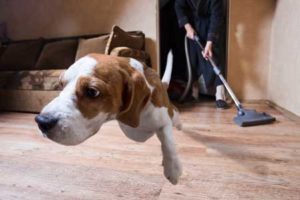 Pets are such noble creatures, living alongside us people as our loyal companions and rightfully referred to by the title of “Man’s Best Friend”.If you own a pet, then you know that pet hair can be troublesome. Pet hairs are worst on carpets and floors, but they can alscastelli gabba
Pets are such noble creatures, living alongside us people as our loyal companions and rightfully referred to by the title of “Man’s Best Friend”.If you own a pet, then you know that pet hair can be troublesome. Pet hairs are worst on carpets and floors, but they can alscastelli gabba
borsa prima classe
smith and soul
nike air max 90 futura
decathlon bmx
college football jerseys
luvme human hair wigs
dallas cowboys slippers mens
sit top kayak
sac eastpak
nike air jordan 1 elevate low
custom sublimated hockey jerseys
blundstone uomo
sit top kayak
alpinestars caschi
o be found all over the house, and on upholstery and furniture.
For that reason, many of us have purchased the top-of-line vacuum cleaners to help us get rid of pet hairs.
But it is important to do proper maintenance to prevent pet hair from destroying the vacuums.
Here are the parts of a vacuum where pet hair can cause problems:
- Filter – Pet hair can penetrate the vacuum filters and block them. This can cause some problems with suction and could destroy the vacuum.
- Motor – When pet hair gets into the motor, it can cause the motor to overheat and to stop working.
- Suction Power – More than any other substance, pet hair seems to be the thing which reduces the suction power of a vacuum. It can cause many problems throughout the whole vacuum system.
- Hoses & Pipes – Pet hair can fill up and block the vacuum, especially if it’s not designed to tackle pet hair. This can cause added pressure on the vacuum, affecting the suction and making the vacuum cleaner prone to overheating.
- Brushroll & Cleaning Head – Pet hair will tangle in the brushroll or cleaning head of a vacuum cleaner, building up over time and preventing the vacuum from working properly.
Protect your vacuum cleaner with these effective ways of preventing pet hair from causing problems with your vacuum. This will maximize your vacuum’s capability and will extend the life span of your machine.
Top 5 Ways to Prevent Pet Hair from Ruining Your Vacuum Cleaner
1. Do Proper Routine Maintenance on the Parts of Your Vacuum
- Vacuum filters – These are used to stop harmful particles entering the machine which might otherwise cause some problems internally. When pet hair blocks the filters of your vacuum, it may not work effectively. By changing the filters more often than recommended, you will solve this problem. You can also clean “washable filters” frequently to get rid of pet hair and odors. Most of the vacuum brands recommend washing the filters every 3 to 6 months. But do it more often and leave it to completely dry for about 24 hours to make sure no moisture is left, before putting it back into the vacuum.
- Brushroll or Roller Brush– Overtime, pet hair will get caught around the roller brush which makes it harder for the vacuum to work effectively. Once or twice a month, check the vacuum’s cleaning head for any hair that has been tangled around it. Remove any dirt and hair by following these steps.
- Dust Cup or Bag – Vacuum cleaners work best when the dust cup or bag is half empty. It can get expensive having to replace vacuum bags more often, so we recommend getting a bagless type of vacuum. That way, you can empty the Vacuum after each use or when it is almost half full. This will also prevent unwanted odors from developing inside the vacuum.
- Hose and Wands – When you notice a loss of suction from the wand handle of your vacuum cleaner, remove the wand and replace it with the hose. If the suction of the hose is good, you might have some blockage in your vacuum’s wand. You can do it in reverse for checking the hose suction. If this happens, it is an indication that you need to clean the hose or wand and remove any objects or pet hair that’s clogging it inside.
2. Buy a vacuum designed to tackle pet hair

A vacuum designed for pet hair will also have the right tools needed to vacuum pet hair. Most of them will have strong suction to efficiently suck all dirt and pet hair into the vacuum, a brushroll which is effective in cleaning pet hair embedded on carpets, and a mini motorized brush attachment for cleaning pet hair on stairs, upholstery, furniture and such.
3. Vacuum Regularly
It is wise not to wait for pet hair and dirt to accumulate before deciding that it’s time to vacuum. This will prevent the vacuum from having to work harder. Experts suggest that you should vacuum at least once a week.
4. Groom Your Pets
 By regularly brushing your pets, you will help get rid of the loose hair. It will also help your pets to shed their hair, so when the seasons change, it reduces the amount of pet hair inside your home. You can brush your pet every day if necessary, they love it.
By regularly brushing your pets, you will help get rid of the loose hair. It will also help your pets to shed their hair, so when the seasons change, it reduces the amount of pet hair inside your home. You can brush your pet every day if necessary, they love it.
5. Give Your Pets a Bath
Giving your pet a bath also helps remove hair. Here, the individual breed will be a factor with each having different skin and hair-coat types. This will determine how often your Pet needs to be bathed, and also which type of Shampoo is best. If in doubt consult your veterinarian for advice.
Post entry: BLOG

